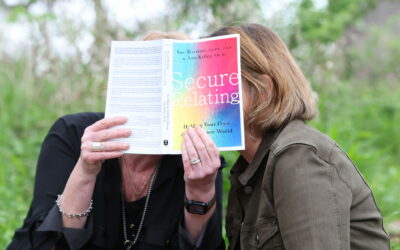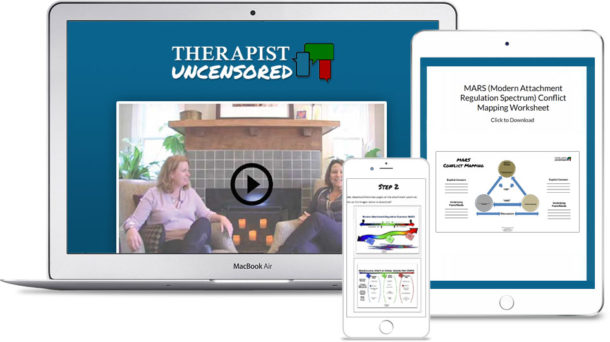Podcast: Play in new window | Download (Duration: 59:32 — 40.9MB)
Subscribe: Apple Podcasts | Spotify | Amazon Music
Polyvagal Theory is about the biology of opening our hearts. Cool, huh?
What is all this fuss about the vagal nerve and the flurry of interventions developed around it? Find out the facts directly from the father of Polyvagal Theory, award-winning neuroscientist Dr. Stephen Porges.
In this episode, he speaks with co-host Sue Marriott LCSW, CGP to discuss this ground-breaking discovery about the biology of threat and safety which explains so much about human behavior and psychological disturbances. Rest assured,this isn’t just about our brains, it’s about the biology of opening our hearts.
This episode will be followed by another updated primer on Polyvagal Theory, so stay tuned.
Who is Dr. Porges?
Stephen W. Porges PhD is the father of the Polyvagal Theory, which has led to groundbreaking shifts in our understanding of how the nervous system responds to threat and trauma. Through his extensive career, he has published over 300 peer-reviewed articles crossing numerous disciplines from anesthesiology to space medicine. The Polyvagal Theory is leading to innovative treatments based on insights into the symptoms observed in several behavioral, psychiatric, and physical disorders.
Dr. Porges is a “Distinguished University Scientist” at the Kinsey Institute, Indiana University. He is the founding director of the Traumatic Stress Research Consortium. He holds the position of Professor of Psychiatry at the University of North Carolina as well as Professor Emeritus at the University of Illinois at Chicago and the University of Maryland. He previously served as president of the Society for Psychophysiological Research and the Federation of Associations in Behavioral & Brain Sciences. He is also a former recipient of a National Institute of Mental Health Research Scientist Development Award.
Episode 93 Show Notes:
Introducing Dr. Porges and The Polyvagal Theory (PVT)
- We love it because what we’re interested here in this community is how can learn and use neuroscience and the relational sciences in order to heal.
- It’s not just for our brains; it’s for our hearts. And it’s for creating secure connections in the world.
The Truth: Beyond Vagal Nerve Pop Culture
- Awareness of the Vagus is great, but Dr Porges gets concerned when people get enamored with the Vagus
- The nerve is really just a conduit. It’s a highway of bringing information from the body to the brain and from the brain to the body. You have to change the information, not fix the nerve.
- It’s supposed to be an understanding of how our body changes state and the connection of our brain to our body and our body to our brain.
- It was the foundation of brain-body science and medicine.
Polyvagal Theory Origins
- 1994 – presented as the subject of Dr Porges’ presidential address to the Society for Psychophysiological Research
- A rediscovery of what had already been observed presented from a new perspective
- 1995 – Polyvagal Theory is published
The Backstory:
- The original research began as an attempt to develop a methodology for dynamic measurement of normal heart regulation of fetuses through the process of childbirth.
- Initially, Dr. Porges thought he discovered a way of measuring the Vagal influence: when the body is regulating, it’s in a good physiological state, resilient, and can survive delivery.
The Paradox
- The situation: baby suffers from hypoxia, resulting in clinical apnea (stop breathing) or clinical bradycardia (heart rate drops)
- Dr Porges’ view: bradycardia indicates protective Vagal response
- Neonatologist and pediatrician view: bradycardia indicates a lethal Vagal response
Both are right, but how?
- They are two different branches of the same system.
- How branches emerge, and their effects are built into the nervous system.
- The protective Vagal circuit (branch 1) is a newer Mammalian Vagal circuit, which preterm babies often aren’t born with.
- During severe stress, the reptilian (the evolutionary older structures) brain starts to regulate our autonomic nervous system, which removes the newer Mammalian Vagal protection from the heart.
The Discovery
- Historically, it was taught that the Vagus is part of the parasympathetic nervous system (PNS), and the PNS was the part of the autonomic nervous system supporting growth and restoration.
- Polyvagal Theory uncovered an ancient Vagal pathway (branch 2) that had the lethal consequences observed by neonatologists and pediatricians.
Trauma and The Ancient Vagal Pathway:
- When it works as a defense, it creates many symptoms that people with severe traumatic experiences have.
- Some symptoms that may occur in the moment of defense: dissociation, passing out, defecation, etc.
- Chronic symptoms: irritable bowel syndrome, genitalia pain, diffuse pain, fibromyalgia, and other medically unexplained symptoms (MUS) that are primarily disorders of the subdiaphragmatic (below the diaphragm) Vagal pathways.
Basic Pre-Polyvagal Theory History Summary:
- Taught that the PNS was protective, but it also has a defense system.
- Taught that the sympathetic nervous system was our fight/flight system, but that isn’t entirely correct. However, it can be recruited in fight/flight just as the Vagus is in shutting down.
Relational Safety and Body Regulation:
- As mammals, we want to be in a world of relationship or relational safety. We need each other to regulate our bodies.
- When interacting with others, our body reacts, but we are not conscious of it.
- Neuroception
- Neuroception is the technique by which the body detects a risk in the environment outside of our awareness.
- If we see this as a functional reflex of the body, we can move beyond assuming responsibility for not being in control of our unconscious reactions. We embark on a journey to understand more about who we are, about our body, and what it is to be human.
- The Voice:
- Actual syntax is far less important than the intonation of the voice, which is regulated by the vagal nerve and reflects our physiological state.
- Mobilizing: Body Regulation in Therapy
- When clinicians can get the body in a state of trust and safety, it creates the ability for client and clinician to co-regulate each other; thus exercising resilience
The Social Engagement System:
- It contains the cranial nerves that regulate the muscles of the face and head, including voice, as well as the heart.
- The interaction we have through social engagement keeps us out of defense.
- A key aspect of social engagement is face-to-face contact.
- Play is a neural exercise that involves spontaneity and reciprocity.
- Our culture says play is a distraction, which is a significant reason the classroom environment is difficult for children with body regulation difficulties. Insufficient opportunities to play results in an underdeveloped ability to co-regulate with others.
Intervening Variables
- An intervening variable is a variable that occurs between two other variables.
- Our physiology is the intervening variable between stimulus and response.
Our Physiology Tells The State We’re In:
- The newer Mammalian Vagal System is our social engagement system.
- When it is working, there is resilience, engagement, and accessibility. When it is turned off, the body is prepared to defend.
- If the physiology of a-typical behavior (spectrum disorders, anxiety, depression, dissociation, etc) is understood, we can see that they are really about faulty Neuroception that was restructured to protects us. It’s about the body unconsciously feeling unsafe to trust due to previous injury.
- Demonstration:
- Dr Porges walks us through a breathing exercise he uses in his workshops to illustrate how the Vagus impacts the heart, thus impacting our feelings of relational safety and capacity for body regulation.
- When you exhale slowly, the Vagus starts having more impact on your heart, which is calming. When you inhale slowly and exhale more rapidly, it does the reverse. It gets you mobilized and defensive.
The Safe and Sound Protocol:
- We know intuitively how to calm a baby by using infant-directed speech, like lullabies.
- Mothers voices tend to be more calming because they are more melodic and go into a higher frequency band. Fathers voices tend to go into lower frequency bands.
- By extracting these frequencies and creating algorithms, Dr Porges developed a program consisting of 5 one-hour functioning neural exercises designed to calm the body’s autonomic defenses and create a feeling of safety in the body.
- It is being used widely with children with spectrum disorders and now in trauma treatment.
- There are 2 primary components, hence the name.
- You have to be safe before you process the sound, and respect for the other person’s physiological state is essential before doing the exercises.
- Online training available through Integrated Listening Systems
- Feedback forum on Facebook where families can talk about their experiences.
- Started by a parent whose son was profoundly impacted by the Safe and Sound Protocol within five days.
- The goal of Safe and Sound is to create a shift in the physiological state.
- A physiological shift in state results in different in output behaviors because the intervening variable helps our body to process inputs differently
Resources:
Seth Porges video – The Polyvagal Theory: The New Science of Safety and Trauma – this is one of Dr. Porges sons doing an excellent job breaking down PVT
Dr Stephen Porges YouTube Videos
The Polyvagal Theory: Neurophysiological Foundations of Emotions, Attachment, Communication, and Self-regulation (Norton, 2011)
The Pocket Guide to the Polyvagal Theory: The Transformative Power of Feeling Safe, (Norton, 2017)
Clinical Applications of the Polyvagal Theory: The Emergence of Polyvagal-Informed Therapies (Norton, 2018).
Who doesn’t love special offers?
Gain access to private, more in-depth episodes and exclusive content.
Become a Super Neuronerd, a Gold Neuronerd or an Out and Proud PLATINUM NEURONERD today! 🙂
Join our exclusive community of Therapist Uncensored Neuronerds for just $5 a month!
Help us create a ripple of security by sharing the science of relationships around the globe!
NEURONERDS UNITE! Click here to sign up.














